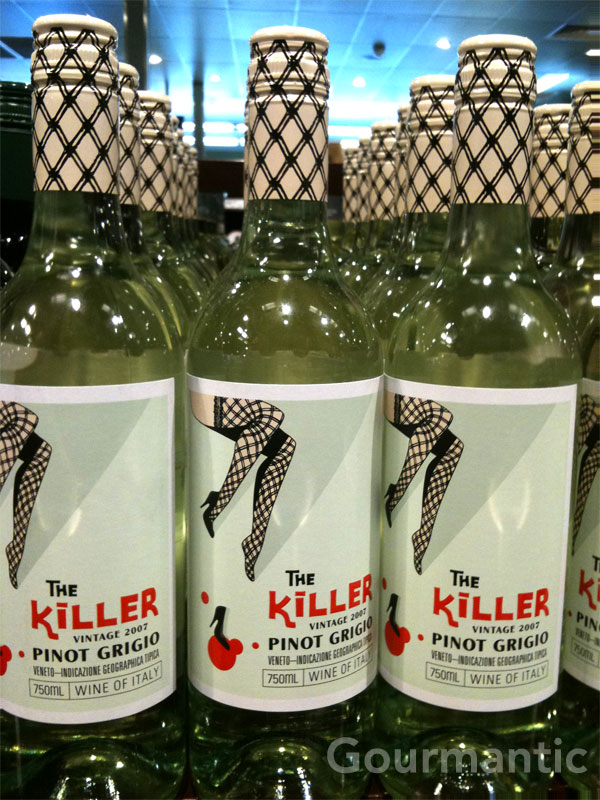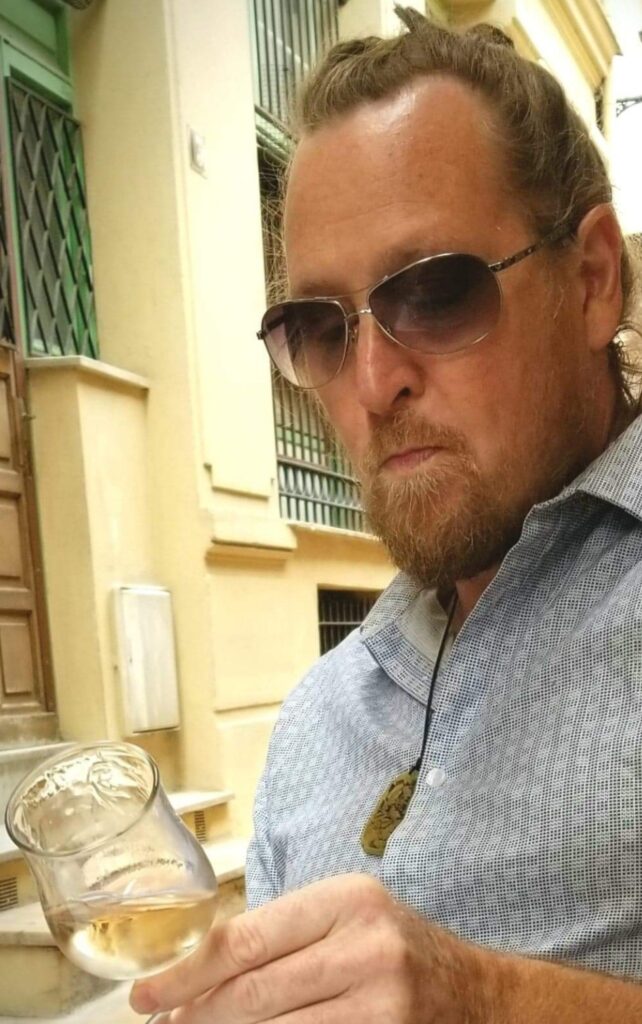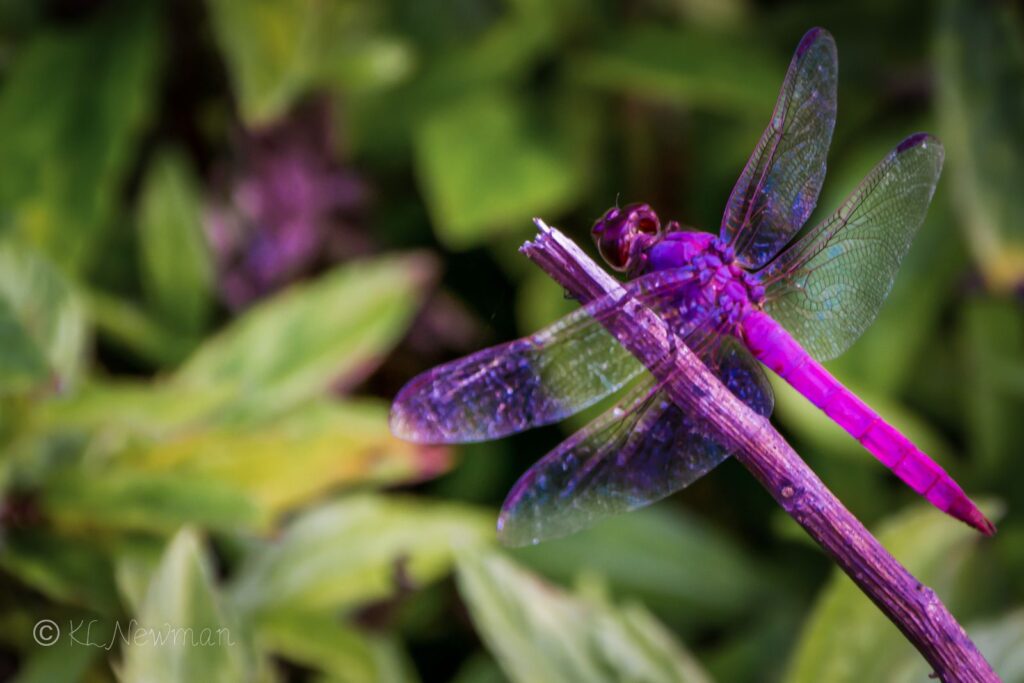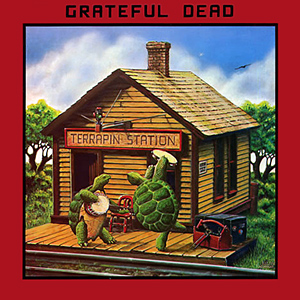
A little more too much wine, my dear? It’s Killer!
by Drew Stofflet
Inspector Trousseau awoke from a foggy haze, knocking his smudged spectacles to the floor. They had been laying in front of him, on top of a tall stack of files, note-filled folders and tattered, blurry photographs. Though it was still dark, he did not know if it was early or late. Had he merely nodded off or dozed through it all?
In the quickly flickering moment between sleep and waking – when, and only when, one realizes the fullness of a dream sequence – his mind flashed to two images of a wine glass.
Was it the one with the same faint oily fingerprint as on the eyeglasses, which now lay on the dark, wooden floor of the writing study? Or was it the one in which that same glass lies on that same floor in an abstract pile of shards, floating in a pool of wine, red like blood? And why two? A late night murder mystery?
Steamy Afternoons
The next afternoon, waiting for the arrival of the latest storm and enjoying a mid-afternoon bath, he thought it came to him. Through the steam, scents of medicated shampoo and floral bath gel rose to his nose, causing his nasal gaze to glance immediately back to last night. The smoky, tarry psoriasis shampoo was an instant marker. (Yah, he had a bad case of dry-climate, mid-winter hat-head, plus he’d been spending a fair amount of time “under-helmet” lately, sweating up grunt climbs and shredding all of that island pow.) And after a rinse of rose-petal bath gel, the two together reminded him of his favorite wine.
Funny enough, It was as though he was bathing in a 2001 Giacomo Fenocchio Barolo Bussia, Barolo DOCG – all smoky, rocky, rosey and nebbiolo-y – or the biodynamic 2017 Benziger Sonoma Pinot Noir, which was born of the prehistoric caldera, much like the hot bath he was soaking in. Those were the same wines he had enjoyed putting his nose into last night while looking at those two photos. What did it all mean? Not the wines, the photos. How were they connected?
He later returned to his study to set his mind to his typing fingers. Before commencing his evening’s work of endlessly pouring over the two photos – in an attempt to answer the seemingly inexplicable – he partook from his stash of home-grown medical cannabis kif. He prepared for himself a small pipe load, spooned out of a two-ounce jar of perfectly cured green and ruby crystalline delight, which smelled of tropical flowers, fruit, sandalwood and myrrh. The flavor of this medicine is out–of–this–world juicy, oily, deep cherry candy and smooth; no coughing. But beyond these sensual intoxications, this Blue Dream from Mendocino has incredible super powers for writers and people like him. It no doubt contributed to the nights spent endlessly pouring over these notes and these two photos. Sometimes the words don’t come. Other times, the stories write themselves. The Blue Dream unlocks the mystery.
About Last Night
He had hoped that the words would flow forth – like the blood that spilled as wine – and that those words might spell out “What are the clues?” and “How are they connected?” Not the wines. The images. Why were there two?
His mind strained and danced with images of peaceful vineyards and picturesque wineries set with various and sundry characters: jealous jilted lovers, Hollywood newbies, shipping tycoons, gilded mafia dons, senators, NBA stars, eager ambitious legal clerks, buff male escorts, traumatized war vets and humble gardeners.
Who was the first to arrive? The last to leave? And how helpful, he thought, a group photo would be. But there was no such luxury.
Who dunnit? Who killed the wine?
You can bet that as the story unfolds like an 82 Lafite; there will be more twists than the corkscrew that opened it. And being on the cusp of the coming spring season, before it’s all said and done, you can bet that Rosé will have had something to do with it. In fact, I believe someone saw her with a glass in hand, appearing not too dissimilar to the one in the images. It was believed to be poured from a brown-bagged bottle sitting on the café table set in the walking mall, during the dreary noon of a snowy March day. Or was it in the kitchen, with the butler (with the “butler’s friend” wine opener in his hand)?
Then again, Trousseau thought, maybe he had been watching too much Agatha Christie.
Cheers! Remember: Wines (and fictional murder mysteries) reveal truth.
A version of this originally appeared in Aspen Daily News

FINE WINE CONSULTANT
WineBuyer and ListCurator, WineWriter and Author
Sommelier, British Court of Masters
Winery Consultant
The following are from previous Issues #20 and back:
Dark and Sooty
by Drew Stofflet

This is not about skin color. Unless we’re talking about very dark red-wine grapes. And luckily, we are. So while dark and sooty may describe very well the wine I tapped the other night, it also is going to cover the artist and whose music I popped on while said wine decanted and a glorious, funky, minimalist meal percolated.
Miles Davis burst onto the jazz scene in the late nineteen forties, stalking the bebop circuit with his very own breadth of minimalism, referred to as “cool.” For decades, he wove dark, golden threads of sparse, remote, ancient and powerful blues though cool jazz, to hard bop, and eventually to late-career pop-ism.
But the in-between, where mystery lives, Davis journeyed into shadowy corners of hopped-up, hyphey, eerie shamanic, alien-inspired black magic of the rarest breed of afro-jazz-funk. Not the friendlier, ever-danceable square rhythms of say, Fela Kuti, the musical landscape of early 1970s-era Davis was a different sort of stalker music, like a lion or tiger was in the room, or just outside of it, in the alley, peering through the window with burning eyes.
This was Miles Davis mixing the ether with John McLaughlin and the English whirling dervish movement, Mahavishnu Orchestra. This was prog-rock synapses about to be blown. This was Miles Davis with Pete Cosey, whose flanged, distorted jazz-funk algorithms are some of the heaviest ever put down. Muted, dying horns like a gazelle being taken by a pack of lions; keys, drums, bongos and shakers incredibly, uncomfortably turning time on itself. Shrill but soft Sonny Fortune flute tones floating from afar, bringing back to tune, the theme, until Davis himself smashes it on an ashen altar, destroying all convention and symbolism as another gazelle runs into the future, chased by yet another pack of hungry cats.
So while the 2012 Tenuta di Arceno Chianti Classico Reserva decanted, a soon-to-be-released a 2014 Bee Hunter Oppenlander pinot noir did its own dark and meaty movement. I went into my medicine chest for two CDs (which I now can own on Spotify) an afternoon/evening set from Osaka, Japan in 1975, and released on two discs, called Agharta and Pangaea. Each is a double-cd set, and each cd is one improvisational movement; all are around forty-five minutes long. That’s a lot of searing, teeth-gnashing dark, arty, ancestral, psychedelic and psychotic experimental jazz. To call this funk is to call Davis’ late work simply watered-down funk.
Which is which I had hoped wouldn’t be the case for this wine. Lo, which is what another controversial and pioneering artiste Piero Antinori had hoped when he began trials to boost the flailing and weak Tuscan sangiovese as it fell off the worldwide market in the nineteen eighties. He recognized this and began to blend cabernet sauvignon and merlot into sangiovese, putting some meat on its bones, Like Pete Cosey’s muscular and textural guitar wah-wah rips coated Davis long thin lines in lush, fleshy texture.
While this was all happening in Tuscany, some applauded and others literally rolled in their graves, winemakers and winegrowers began to march across the desert of astringency towards the blooming palates of the west, and again, lo, sangiovese from Chianti gained, fat, meat, color and a new ground in the western market.
This particular bottle is an example of that. It was given to me by a friend who introduced me to Lawrence Cronin, the winemaker, a few years ago. He was making wine for a spell at EdMeades in Mendocino’s Anderson Valley, after they were purchased by Kendall-Jackson, and later, Cronin went to work for another of their recent acquisitions, Tuscany’s Tenuta di Arceno.
Ya, so right there, that tells you a little bit about more breaking convention. KJ is not Tuscan, and when many of the Mondavis and the likes bought into Tuscany (and France) in the early nineteen nineties, they did so with an eye to the future, like that gazelle, hoping not to get eaten (in the marketplace). That so, these wines have a likeable plushness that was missing in the minimalist era, that was like concrete on a burnt glass floor to many minds and mouths. Gone is the bitter herb and dank old wood. In its place is a color more consistent with Mile’s alien musical black magic It has flashy, deep-set tannins that can solo all night. Powerful black fruit and clovey, peppery spices. It is big and extracted, with a long, dry finish. This is California-style Chianti all the way.
Good enough, then, to get down with a filet mignon dipped in browned butter pan drippings from a pan of roasted squash and black pepper, then cooked with tongs held directly to the flame.
Listening to the rise and fall of Davis’ Pangaea part one as it breaks convention, it is apparent, we are either chasing or being chased Our ass is either about to go into the fire, or we’re giving chase. In the wine world, that means we are clinging to old traditions; or we are trying to outrun death through new ones. In the marketplace we get both. Life and death.
Many believed this concert was Miles Davis’ last powerful, meaningful moment. After, he became ill, disappeared from public, courted controversy, and became a gaunt, ashen smoking-jacket of a man before his final pop releases and death caught him, like it catches a gazelle at a watering hole.
To dark and sooty.
Cheers! Remember, wine reveals truth.
Drew Stofflet
Sonoma’s Green String Farm: Bobby Cannard’s Natural Process (and Alice Waters’ Secret) By Drew Stofflet
Sometime in the early 1970’s, after Alice Waters opened her beyond-iconic and groundbreaking Chez Panisse, she and her father were in a conundrum. It seemed that the vegetables being prepared at the pioneering Berkeley, California restaurant – and now farm-to-table cultural institution – were, in her father’s opinion, not as flavorful as they could be.
After a heart-to-heart, they decided he would seek out a producer of high caliber produce that they could not only rely on, but also call a “farm of their own.” A search of small organic farms through University of California, Davis revealed that there were only two in all of Northern California.
Waters’ father visited both, along with her mother. One was perfect in its rows, with its “victory garden” on display for all to see upon arrival. The other was an overgrown jungle. The first must have been grown chemically at some point, he thought. When the ambitious (and eccentric) farmer pulled back the jungle’s giant tangle of leaves at the other, he revealed the most beautiful carrots her father had ever seen. “And he was just crazy enough for us,” said Waters, relating her father’s account of his discovery that day.
That farmer was Bobby Cannard, and still to this day he preaches to the masses in a “top of the mount” fashion full of zeal and prophecy.
Since that fateful day more than thirty years ago, Cannard has been providing Chez Panisse with glorious, healthy and mouthwatering produce including (in his words) “the most nutritious carrots known to man”. Cannard tends to speak like a carbon-beatnik junkie; with enough philosophical fuel to fan the flames of a carbon-chaos-induced apocalypse, yet his heart is his guiding principle.
In 2008, Cannard – along with Sonoma’s “natural-farming-process” winemaking advocate Fred Cline – opened the 120-acre Green String Farm. It sits at the base of Sonoma Mountain; a corner of the windswept Sonoma Coast wine AVA where abundant sun mingles with afternoon breezes during a long growing season. Here they produce a mesmerizing array of seasonal fruits and vegetables, including kale, chard, cabbage, bok choi, garlic, onions, carrots, squash, potatoes, beets, artichokes, corn (for ground polenta) and various beans (for drying). They also grow parsley, verbena, mint, basil and maintain an orchard of Meyer lemons, cherries, peaches and olives (for olive oil, naturally). They raise chickens, and – on two separate properties in northern California – cattle (near Mt. Shasta) and hogs (in the Sierra foothills). In addition, they have a bountiful on-site farm store, open daily to the public.
Cannard and Cline also created the Green String Institute to pass this elder-agronomist knowledge of farming on. Conscientious students from around the world come here to study this model of sustainable farming. Sitting in the library and study room inside the farm’s schoolhouse gives pause to ponder Waters’ own lengthy bio, and feel echoes of one of her great achievements; the Berkeley located, non-profit Edible Schoolyard Project, founded in 1996.
The Green String natural-process method of agriculture is to build a self-nourishing system which works for, rather than against, nature. This means active cultivation and management of cover crops, growing them to maturity before folding them back into the soil for carbon retention. This is also good for the bugs and birds. Cannard points to the hillsides above the farm and says this aspect of humic soil building also prevents most of the precious water from running off towards the deep blue ocean.
The Green String mantra is to grow fifty percent of the crops for human consumption and fifty percent to give back to the soil. (Cannard thinks it should ultimately be 40-60, to return as much carbon to the process as possible.) Soil supplements are limited to low input, biologically active compost and compost teas, microbes and added trace minerals through crushed gypsum, volcanic rock and oyster shells. Their farming methods are not certified, rather resting their merit on a profound “trust in nature” ethos.
Artificial fertilizers, pesticides and herbicides are “poison” according to Cannard. He breathes fire when he speaks of these, like some carbon-junkie dragon. I spoke with him by phone and visited him at the farm recently. His many metaphors and analogies of our (unbalanced) carbon-based existence may leave you queasy. But beneath the flames, he speaks for the soil like the Lorax speaks for the trees.
He believes that “Soil biology is a contract between all points of nature, and that the regeneration of soils is the key task of our generation. Just like humans, plants need healthy digestion and a great relationship with the soil. If there is an unhealthy balance between soil and roots, this cannot happen.”
Waters’ and Cannard’s mission back in the 1970s were considered “forty years ahead of its time”. But to show how the times are a-changing, Cannard leaves me with this, about a giant commercial farm in Tennessee: “Grimway Farms – at roughly 30,000 acres – and the nation’s largest producer of carrots, is now converting to organic farming. They’re using crushed rocks and rebuilding the soil for plants with healthy immune systems that produce a sweeter, more nutritious carrot that also has a much longer shelf-life.”
To the long-term wealth of our soils and the health of our plants!
Find Green String Farm just east of Petaluma at 3571 Old Adobe Road; the farm store is open from 10am to 5pm daily, except for Mondays. Daily fare at the farm store includes whatever is in season, from fresh greens to cukes, roots, fruits, squashes and more; including heritage beans, nuts, olive oil, and a whole lot more.
From MillValleyLit Spring 2019, “Salutes Psychedelia” Issue:

Dragonfly Wings…Valkyrie’s Claws
by Drew Stofflet
They traveled from Mill Valley south on dragonflies’ wings.
Pulling into the train station in the middle of the old growth redwoods they met the torchbearer, the former kid. He has grown into his cloth.
He was doing Valkyries business this day (in a good mood, much to our relief).
He came bearing a drinking horn, giving us a glimpse of fate and reincarnation, clawing open the sky, where Odin’s ravens Huginn (thought) and Muninn (mind) circled above, on their daily flight around the world. They are the eyes of the world. They watch over the living and the dead (the hanged and the slain) (the judged and the persecuted).
Odin’s wolves, Geri and Freki, and the “wolf-warrior-bands” (the Ulfheonar) prowl the perimeter, desirous, greedy, ne, audacious. Wanton. “Give us your soul.”
Charon, Styx and Acheron journey across the river that runs between the hills, in the valley of this life and death, guiding this blessed transformation. Electricity from river eels is help on the way, as well as fate and reincarnation.
Meanwhile, the sharpness of the sun’s rays are needles that pierce the heartspace. Respiration from locomotive breath sprays into the light like a dolphin’s spout.
A train’s whistle sends shivers up and down our spines. Malachite crumbles. Shakti pop and the broken pieces are eyes like pinballs. Googly eyes. Googly-oogly eyes. More eyes of the world. Communal convulsion.
The train arrives, earth shaking. Headlights shed light. The train I ride. A passenger train, a spirit carrier. The guidance of the dragonflies. Turtles and brakemen. Storytellers. Transformation.
They walk along the kaleidoscopic path of humanity. Some forgot their clothes.
Everyone waits for Gabriel’s trumpet. And the leaving train whistles. Though the end is untold, would they blow you safely home.
END


Drew Stofflet “Outro” as he illuminates his “Dragonfly Wings…Valkyrie’s Claws”: In late September I attended the annual Santa Cruz Mountain Sol Fest, held in the Roaring Camp Railroad Yard under the giant redwoods in Felton, California. The musical lineup on the last day, Sunday, was largely focused on the music of the Grateful Dead, and more specifically, Jerry Garcia.
Garcia’s lifetime friend, sidekick and bandmate Bob Weir graced the stage with many of his longtime musical friends, including the Golden Gate Wingmen, and his own new three-piece band called The Wolf Brothers.
A certain drama transpired on stage that day, invoking the images I am trying to depict in my piece. I would say it was powerful, potent and “different”, because I have been participating in these ecstatic group events for more than thirty years. Something was happening in a heightened, focused and profound way on this day; from hawks circling high above, to masses of dragonflies flitting above the heads in the crowd, low-bent golden sunbeams, and extremely Grateful Dead-esque train imagery.
More specifically, all of the music Mr. Weir guided that day seemed to be from the great songbook of Garcia and his prolific musical collaborator Robert Hunter, rather than his own compositions (that he formed with his own partner-in-crime John Perry Barlow). All of this could seemingly add up to just another day on the lawn, listening en masse to this beautiful music. But the music on this day seemed to come from a higher place-much higher-as Weir visibly shook his head in a convulsive manner and led the crowd as one through the same energy trance at the end of the show.
The train whistled and took all of the revelers back down the mountain; I shook and shivered through the night, wondering, processing and questioning the “what” and “why” of all of this. I knew there was something bigger. When I returned home to Marin the following night I received a text from an old friend and bandmate stating that Robert Hunter, the Dead’s literary source and sorcerer (along with Barlow) had passed, which brought some answers to what I had witnessed and felt. END

Drew Stofflet is a lifelong reader and writer of fiction, non-fiction and poetry. A professional wine, food and travel writer, his weekly column “Wine Reveals Truth” has appeared in the Aspen Daily News (Colorado) since 2008. Drew is also a lifestyle, food, travel and wine contributor for Sensi Magazine and SensiMag.com. An avid mountain biker, personal chef, wine sommelier, musician, dancer, yoga practitioner, and adventuring world traveler, Drew formerly lived with his Australian Shepherd high on a hill in Lagunitas, California, and now resides high on a hill in Mill Valley.